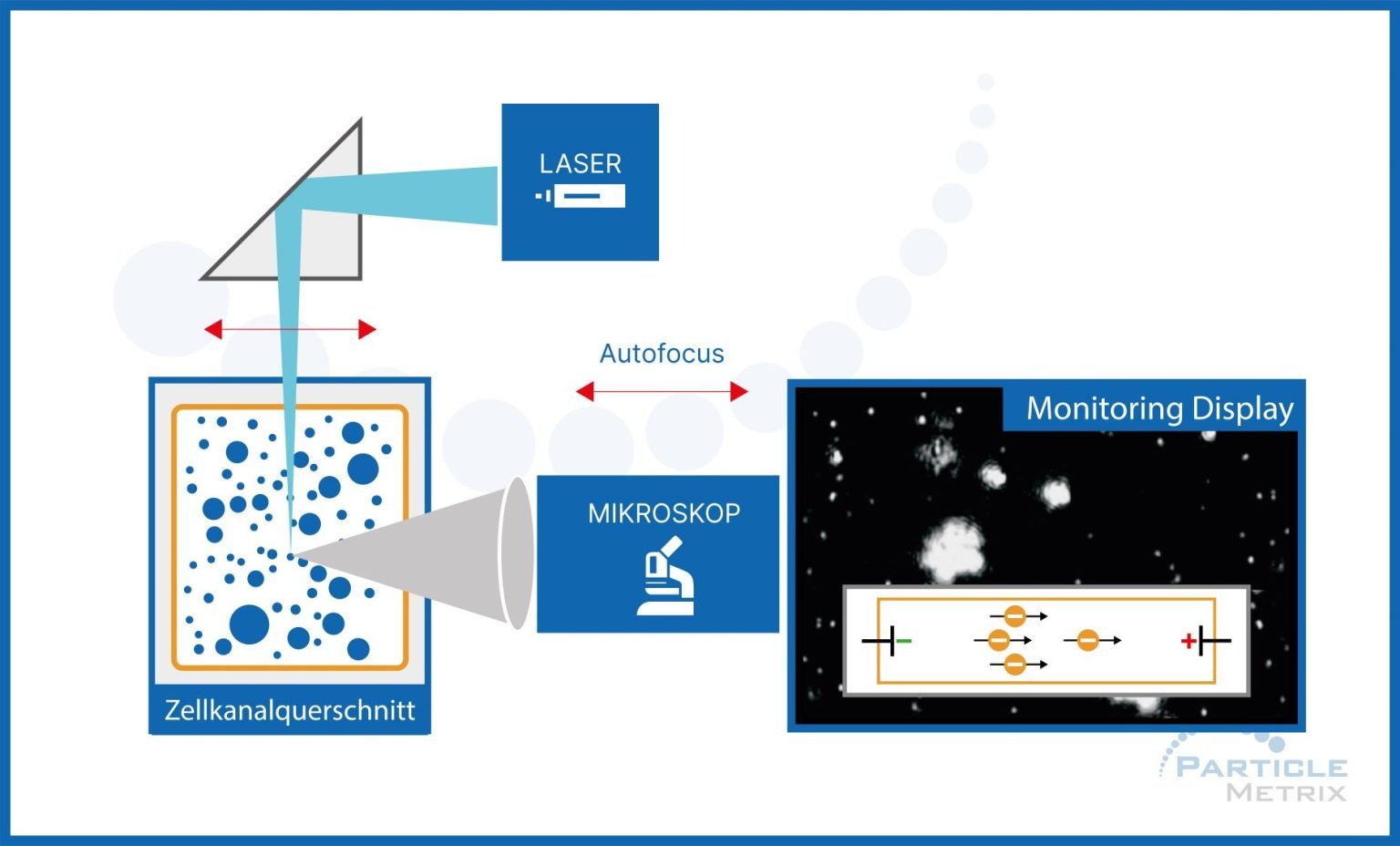Particle Metrix
Nanoparticle Tracking Analysis (NTA) is a technique to characterize nanoparticles in suspension in the size range of 10 – 2000 nm. A microscopic setup allows real-time visualization of particles below the diffraction limit of conventional microscopes, in both scatter and fluorescence mode. A broad range of applications from nano-sized metallic particles to polymers and biological nanoparticles such as viruses or extracellular vesicles makes NTA a versatile method for sizing – independent of the refractive index of the particle material.
PHYSICAL PRINCIPLE
The particles in the sample are visualized by illumination with a laser beam. The scattered light from the particles is recorded with a light-sensitive CMOS camera chip placed at a 90° angle to the illumination plane. The setup, also known as ultra microscopy, [9] allows detection and recording of each individual particle below the size limit of typical microscopes. The size of each particle is calculated by Brownian motion analysis of the individual tracks, allowing simultaneous determination of size and concentration.
The particles in the sample are visualized by illumination with a laser beam. The scattered light from the particles is recorded with a light-sensitive CMOS camera chip placed at a 90° angle to the illumination plane. The setup, also known as ultra microscopy, [9] allows detection and recording of each individual particle below the size limit of typical microscopes. The size of each particle is calculated by Brownian motion analysis of the individual tracks, allowing simultaneous determination of size and concentration.

SUMMARY
Nanoparticle Tracking Analysis is a particle characterization technique for virtually all types of nanoparticles suspended in media. On the same sample, the size, concentration, zeta potential and fluorescence on the same sample are measured.
The highlights of this technique are:
Colocalization
Characterization of nanoparticles in solution
Measurement at comparatively low concentration levels (down to 105 particles per cm3)
Single particle analysis resulting in high-resolution distributions
Specificity with fluorescent detection
NTA is a fast single particle analysis tool for visualization and quantification of subpopulations, size, fluorescence, surface charge (zeta potential) and concentration.
Nanoparticle Tracking Analysis is a particle characterization technique for virtually all types of nanoparticles suspended in media. On the same sample, the size, concentration, zeta potential and fluorescence on the same sample are measured.
The highlights of this technique are:
Colocalization
Characterization of nanoparticles in solution
Measurement at comparatively low concentration levels (down to 105 particles per cm3)
Single particle analysis resulting in high-resolution distributions
Specificity with fluorescent detection
NTA is a fast single particle analysis tool for visualization and quantification of subpopulations, size, fluorescence, surface charge (zeta potential) and concentration.
Powered by
MakeWebEasy.com


